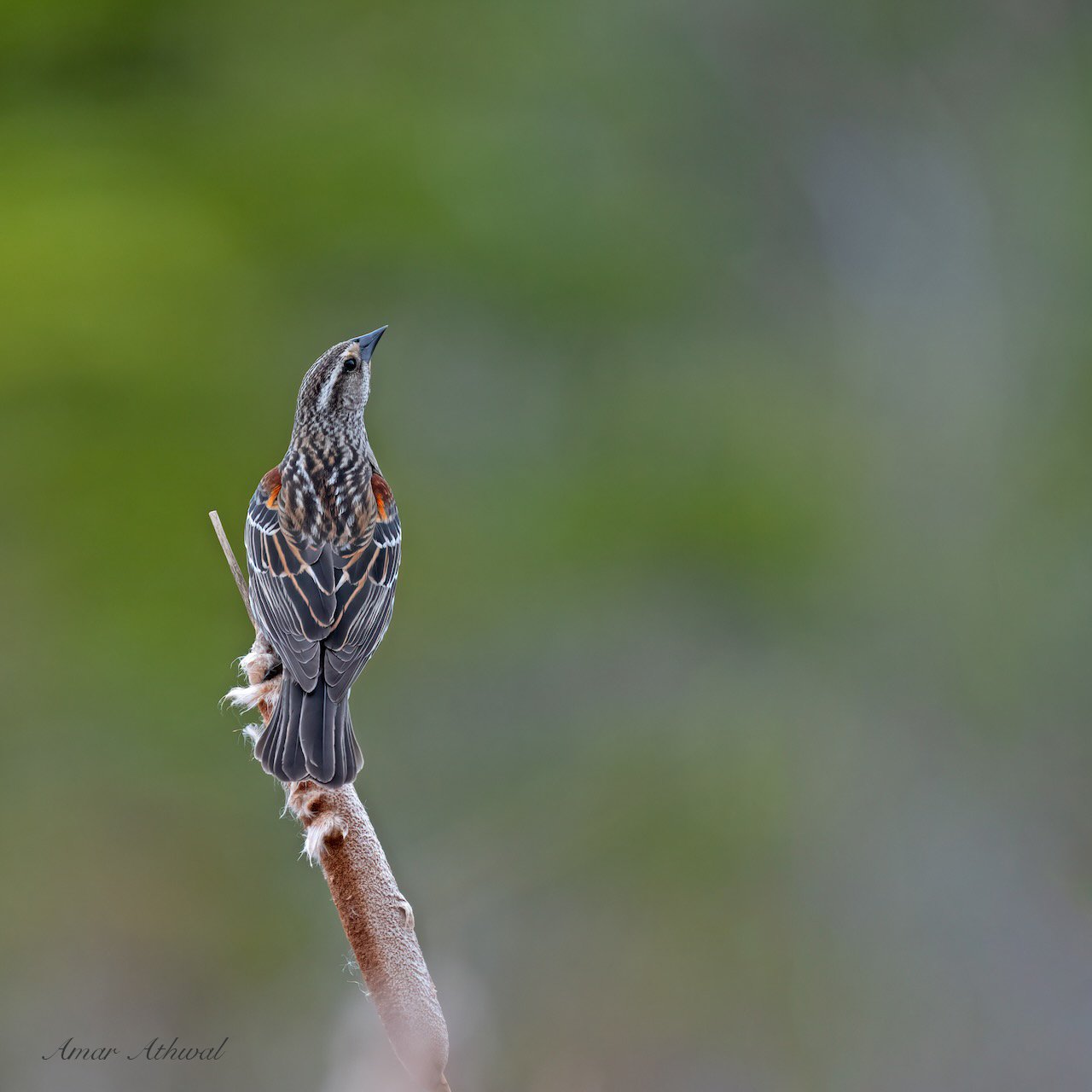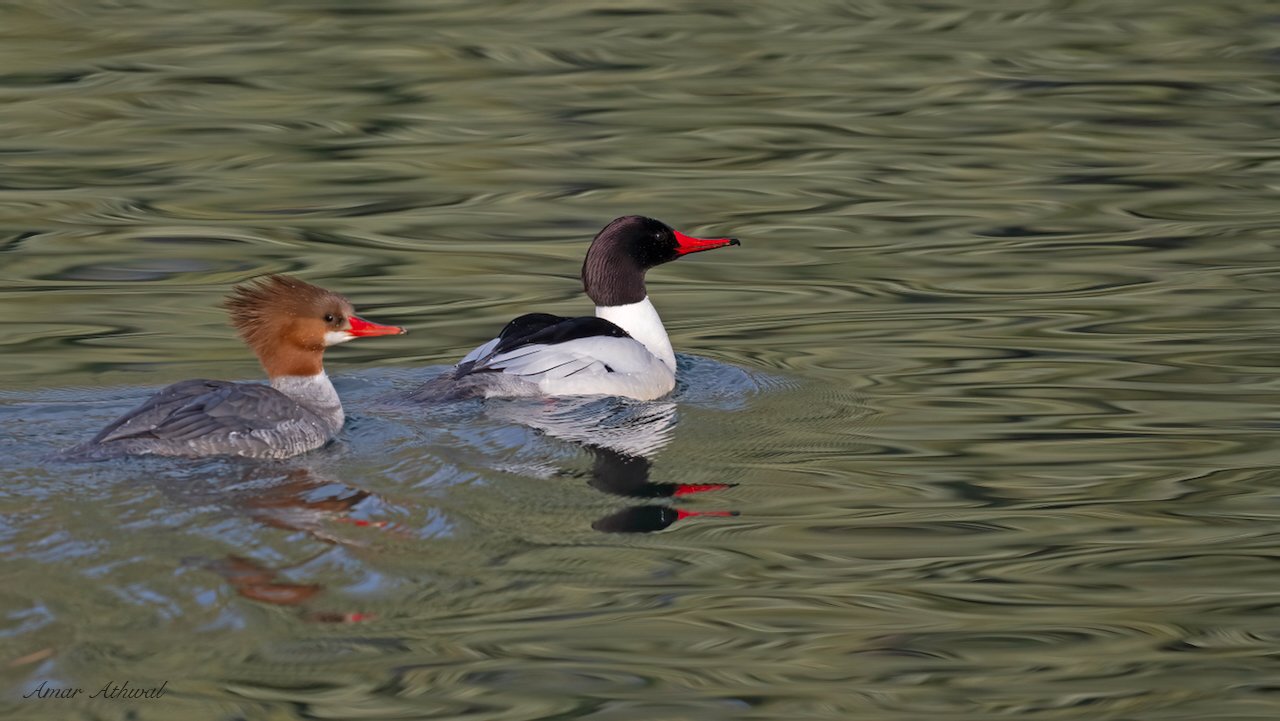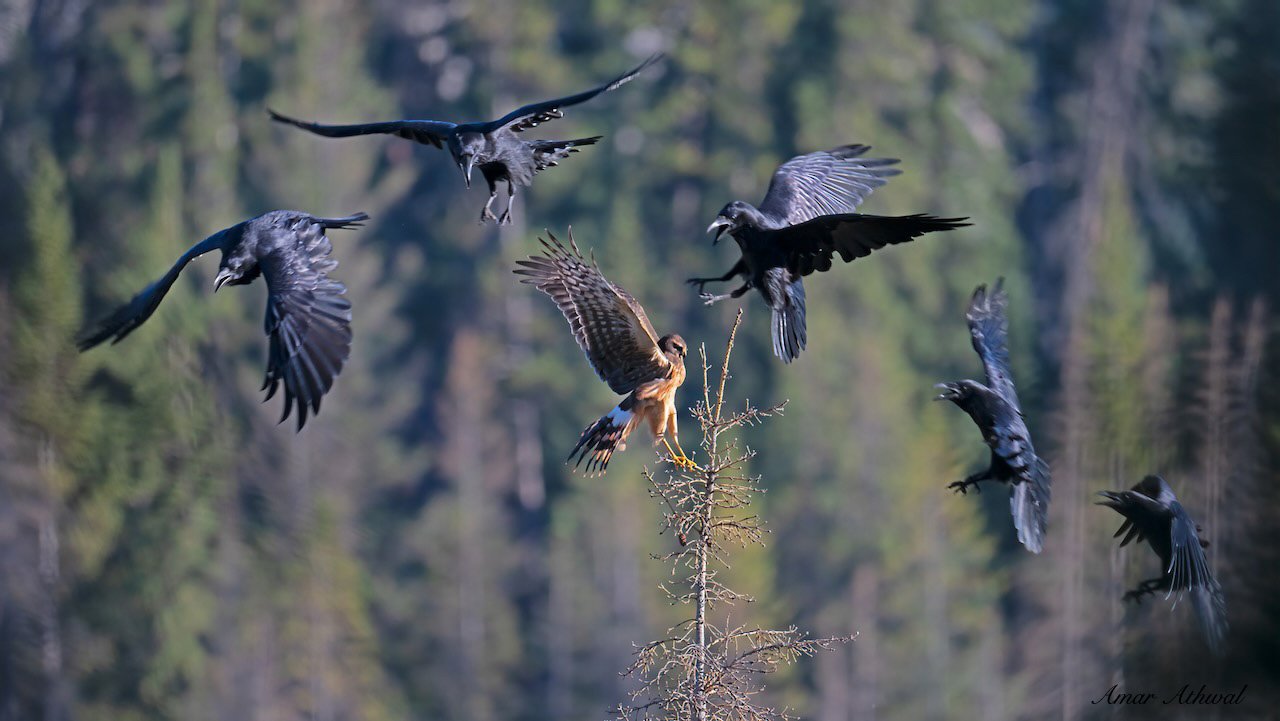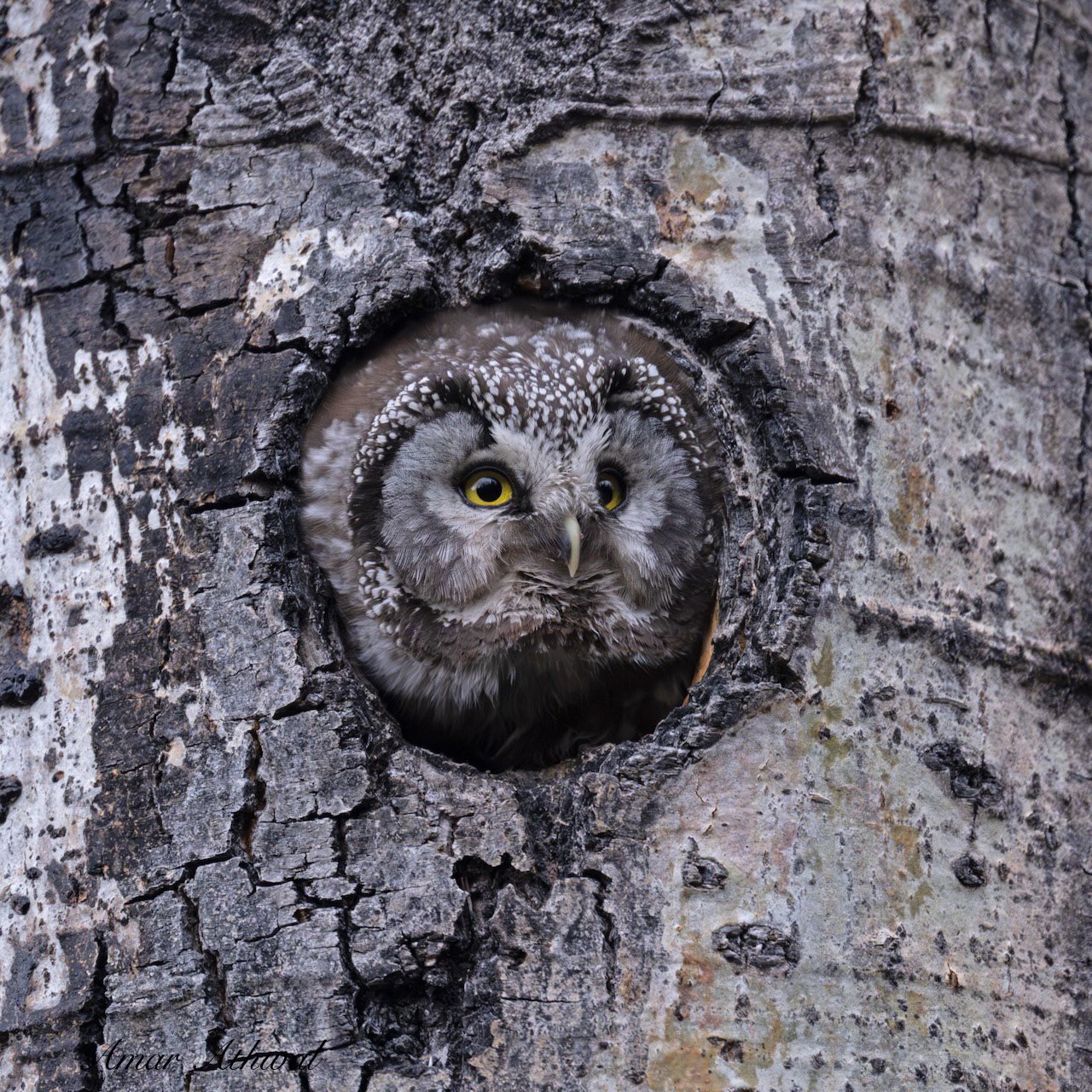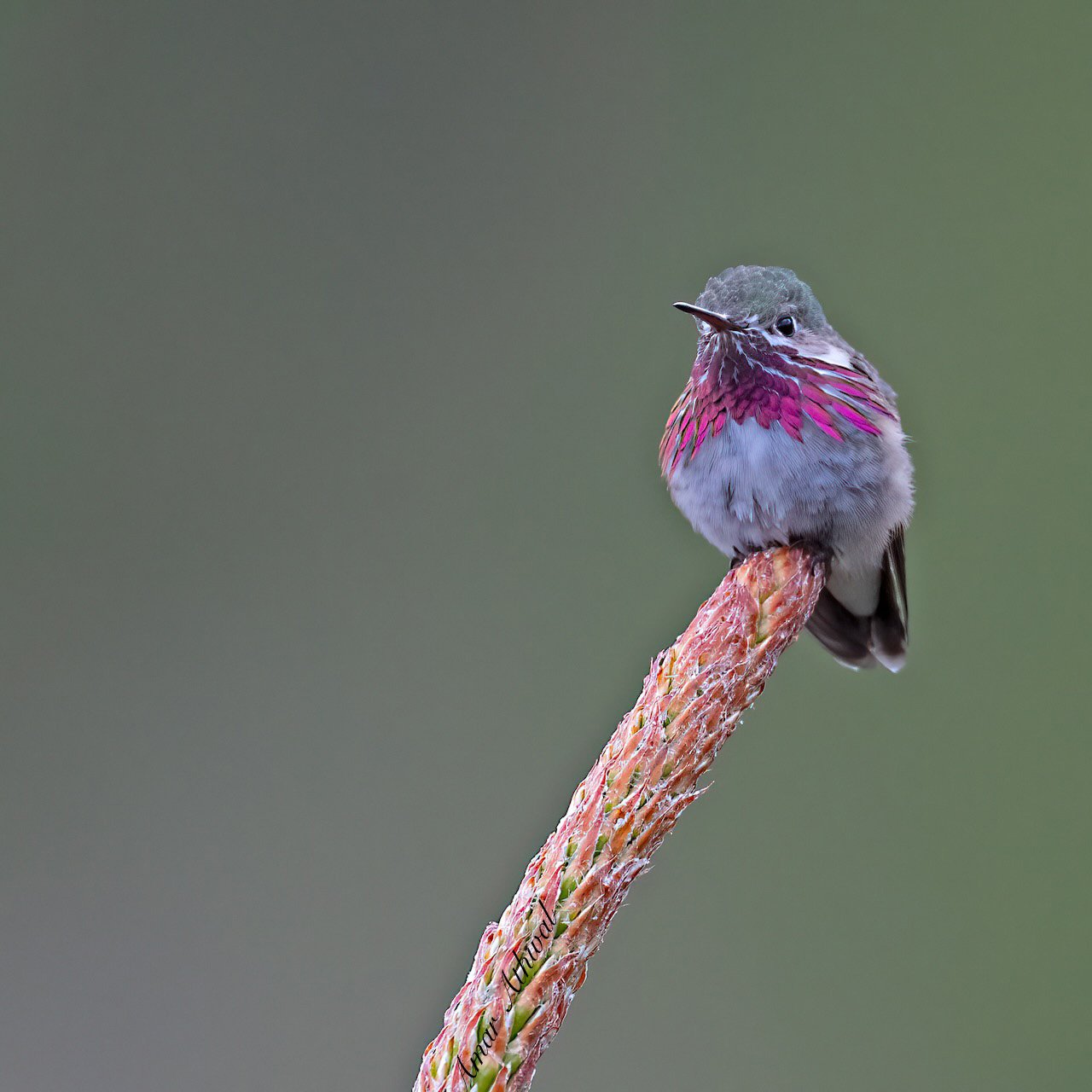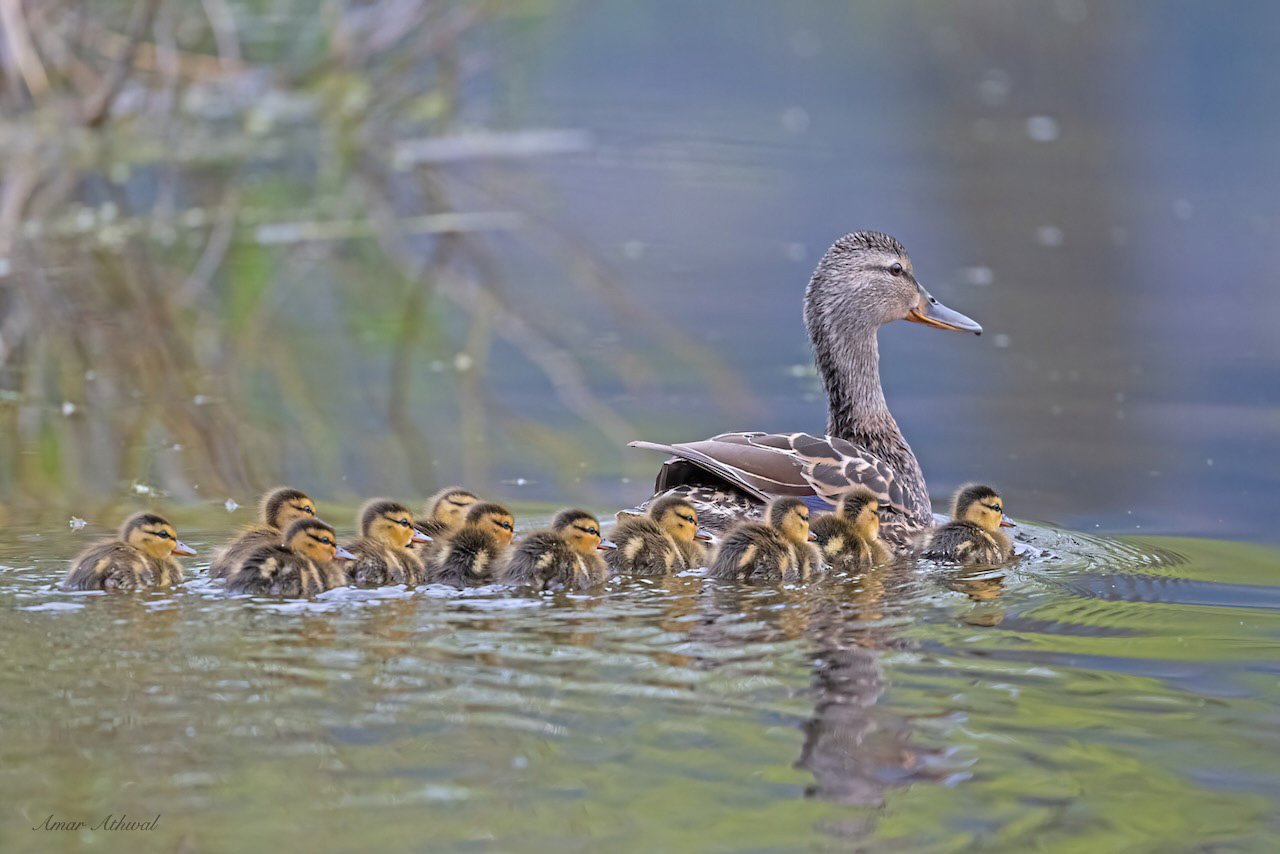Red-winged Blackbirds are among the most abundant birds in North America. One estimate puts the global breeding population at 180 million. Most of us are more familiar with the male, which is all black with a red shoulder patch bordered by yellow. Males spend much of the day singing, defending their territory from other males and, regardless of size, chasing away predators—even pursuing them in flight.
Females, like the one pictured here, can be found lower in the vegetation, searching for food and weaving intricate nests. Red-winged Blackbirds inhabit marshes, watercourses, wet roadsides, drier meadows, old fields, and even water hazards on golf courses.
They are a highly polygynous species. In some cases, a single male may have up to 15 female mates. In certain populations, up to 90 percent of territorial males have more than one female nesting within their territories. However, studies have found that 25 to 50 percent of the nestlings are fathered by males other than the territorial one.
